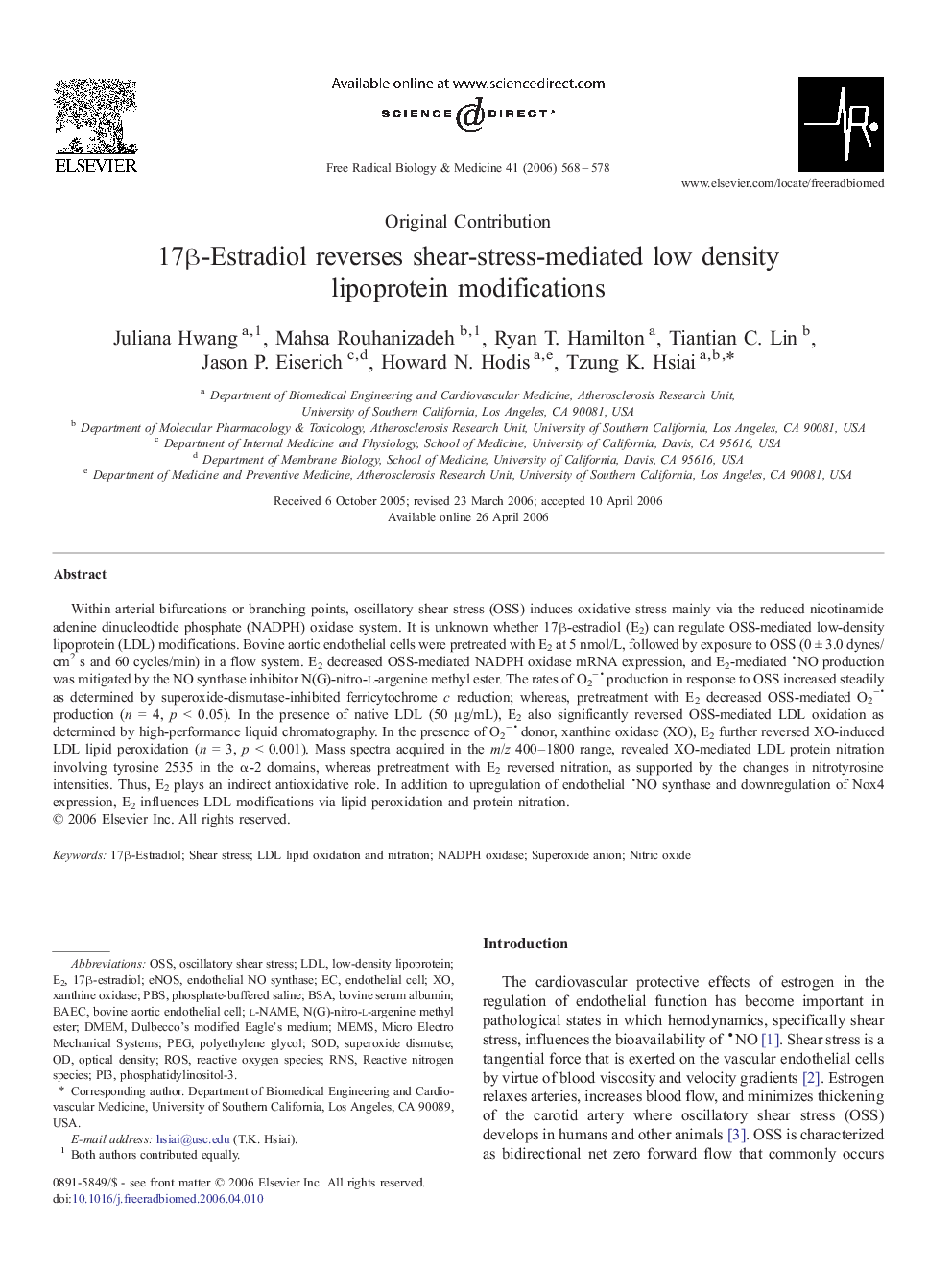| Article ID | Journal | Published Year | Pages | File Type |
|---|---|---|---|---|
| 1911828 | Free Radical Biology and Medicine | 2006 | 11 Pages |
Abstract
Within arterial bifurcations or branching points, oscillatory shear stress (OSS) induces oxidative stress mainly via the reduced nicotinamide adenine dinucleodtide phosphate (NADPH) oxidase system. It is unknown whether 17β-estradiol (E2) can regulate OSS-mediated low-density lipoprotein (LDL) modifications. Bovine aortic endothelial cells were pretreated with E2 at 5 nmol/L, followed by exposure to OSS (0 ± 3.0 dynes/cm2 s and 60 cycles/min) in a flow system. E2 decreased OSS-mediated NADPH oxidase mRNA expression, and E2-mediated NO production was mitigated by the NO synthase inhibitor N(G)-nitro-l-argenine methyl ester. The rates of O2â production in response to OSS increased steadily as determined by superoxide-dismutase-inhibited ferricytochrome c reduction; whereas, pretreatment with E2 decreased OSS-mediated O2â production (n = 4, p < 0.05). In the presence of native LDL (50 μg/mL), E2 also significantly reversed OSS-mediated LDL oxidation as determined by high-performance liquid chromatography. In the presence of O2â donor, xanthine oxidase (XO), E2 further reversed XO-induced LDL lipid peroxidation (n = 3, p < 0.001). Mass spectra acquired in the m/z 400-1800 range, revealed XO-mediated LDL protein nitration involving tyrosine 2535 in the α-2 domains, whereas pretreatment with E2 reversed nitration, as supported by the changes in nitrotyrosine intensities. Thus, E2 plays an indirect antioxidative role. In addition to upregulation of endothelial NO synthase and downregulation of Nox4 expression, E2 influences LDL modifications via lipid peroxidation and protein nitration.
Keywords
eNOSPBSRNSPI3BAECDMEMXanthine oxidaseMEMS17β-estradiolBSAl-NAMEDulbecco's modified Eagle's mediumROSbovine serum albuminsuperoxide anionOscillatory shear stressendothelial NO synthaseNADPH oxidaseOSSShear stressSODbovine aortic endothelial cellEndothelial cellMicro electro mechanical systemsphosphatidylinositol-3Low-density lipoproteinLDLPhosphate-buffered salineNitric oxidepolyethylene glycolPEGoptical densityreactive nitrogen speciesReactive oxygen species
Related Topics
Life Sciences
Biochemistry, Genetics and Molecular Biology
Ageing
Authors
Juliana Hwang, Mahsa Rouhanizadeh, Ryan T. Hamilton, Tiantian C. Lin, Jason P. Eiserich, Howard N. Hodis, Tzung K. Hsiai,
